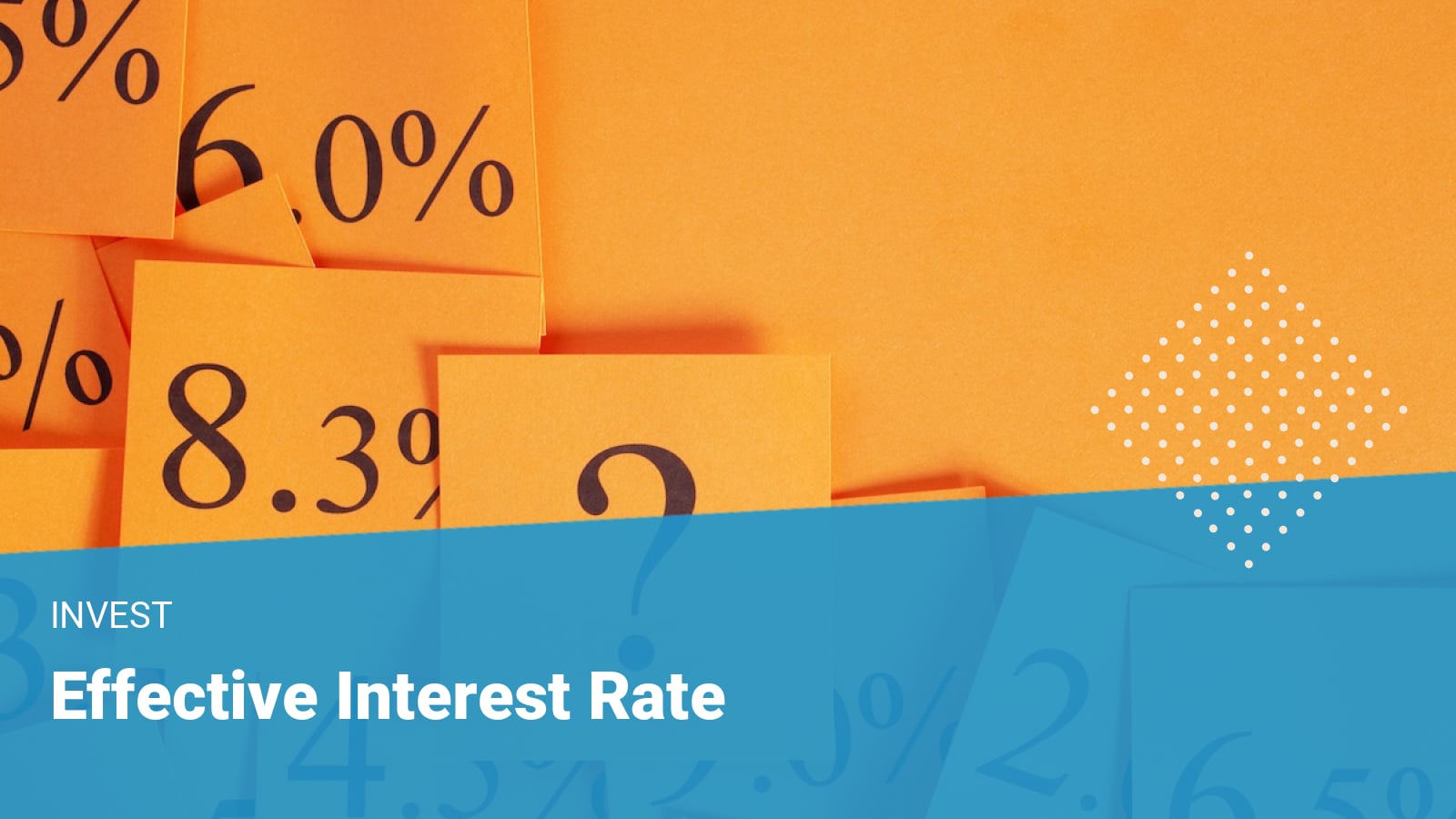When you take out a loan, whether it’s a personal loan, payday loan, mortgage, or auto loan, you will see various interest rates, including the stated interest rate and annual percentage rate.
You seldom see the Effective Annual Interest Rate (EAR), despite its importance.
The effective annual interest rate may also be referred to using other terms such as the effective interest rate (EIR), annual equivalent rate (AER), or effective rate.
So, what is the effective interest rate and how does it work?
How the Effective Interest Rate Works
The effective interest rate is the total interest cost associated with a loan.
All loans have compound interest, meaning the bank adds the previous month’s accrued interest to the principal when calculating your future interest payments.
The effective rate takes this into consideration and expresses it as a rate that is generally slightly higher than the stated interest rate but lower than the APR.
How to Calculate Effective Interest Rate
The effective rate of interest is one of the easier financial calculations to make, but you still need an in-depth equation to figure it out.
The effective interest rate formula is:
r = (1 + i/n)^n – 1
The “r” is your effective interest rate, “i” is the stated interest rate in its decimal format (3% is 0.03), and “n” is the number of times the interest compounds in a year.
Generally, the “n” will be a 12 because most loans compound monthly, but, in some rare cases, it may also be daily, weekly, or continuously.
An example:
Let’s say you have a $100,000 loan with a 3% stated interest rate that compounds monthly, here is how to calculate the effective interest rate:
r = (1 + 0.03/12)^12 – 1
In this case the 3% stated interest rate is equal to a 3.04% effective interest rate.
While the difference may seem insignificant, this can be a helpful tool when comparing loan offers that are offering virtually identical terms.
The table below shows how effective annual rates change with compounding:
| Interest Rate | Semi-Annual | Quarterly | Monthly | Daily |
|---|---|---|---|---|
| 1% | 1.0025% | 1.0038% | 1.0046% | 1.0050% |
| 2% | 2.0100% | 2.0151% | 2.0184% | 2.0201% |
| 3.% | 3.0225% | 3.0339% | 3.0416% | 3.0453% |
| 4% | 4.0400% | 4.0604% | 4.0742% | 4.0808% |
| 5% | 5.0625% | 5.0945% | 5.1162% | 5.1267% |
| 10% | 10.2500% | 10.3813% | 10.4713% | 10.5156% |
| 15% | 15.5625% | 15.8650% | 16.0755% | 16.1798% |
| 20% | 21.0000% | 21.5506% | 21.9391% | 22.1336% |
| 25% | 26.5625% | 27.4429% | 28.0732% | 28.3916% |
| 30% | 32.2500% | 33.5469% | 34.4889% | 34.9692% |
| 35% | 38.0625% | 39.8676% | 41.1980% | 41.8830% |
| 40% | 44.0000% | 46.4100% | 48.2126% | 49.1498% |
Why the Effective Rate is Important
The effective rate of interest determines an investment’s true return or a loan’s true interest rate.
The annual interest rate and effective interest rate can differ significantly due to compounding. The effective rate can help you figure out the best loan rate or which investment offers the best return.
When compounding is taken into consideration, the EAR will always be higher than the stated annual interest rate.
As an example, if you deposit $10,000 into a savings account with a stated interest rate of 12%, compounding monthly, the effective rate will be around 12.68%, as the following table shows:
| Month | Balance | Interest Earned | Ending Balance |
|---|---|---|---|
| 1 | $10,000.00 | $100 | $10,100.00 |
| 2 | $10,100.00 | $101.00 | $10,201.00 |
| 3 | $10,201.00 | $102.01 | $10,303.01 |
| 4 | $10,303.01 | $103.03 | $10,406.04 |
| 5 | $10,406.04 | $104.06 | $10,510.10 |
| 6 | $10,510.10 | $105.10 | $10,615.20 |
| 7 | $10,615.20 | $106.15 | $10,721.35 |
| 8 | $10,721.35 | $107.21 | $10,828.56 |
| 9 | $10,828.56 | $108.29 | $10,936.85 |
| 10 | $10,936.85 | $109.73 | $11,046.22 |
| 11 | $11,046.22 | $110.46 | $11,156.68 |
| 12 | $11,156.68 | $111.57 | $11,268.25 |
The change in account balance from the start at $10,000, to the end where the balance is $11,268.25, equals an effective interest rate (12.6825%).
Even though the bank stated a 12% interest rate, your investment grew by 12.68%.
Sources
- Corporate Finance Instituteaccessed on July 19, 2022



